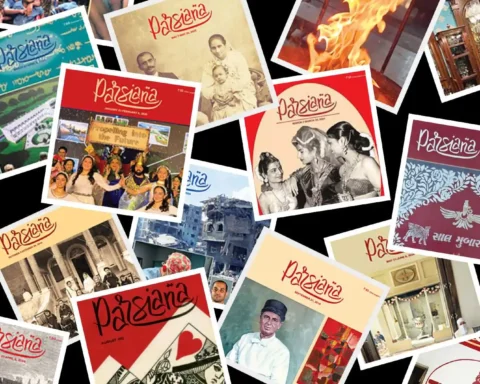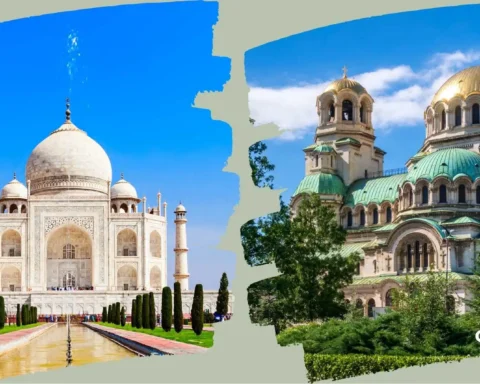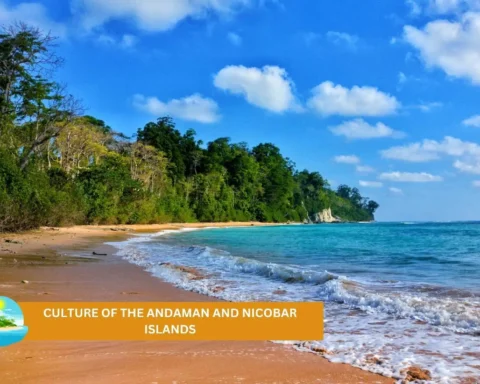Sindhi Culture Day is one of the most prominent and popular cultural festivals amongst the Sindhi-speaking people. Celebrated annually on the first Sunday of December, it is a marker of the centuries-old rich culture of the Sindhi identity celebrated in Pakistan and the wider Sindhi diaspora across major cities. Festivities are punctuated by musical programs, lecture programs, poetic performances, musical concerts, and other cultural events, while men and women wear cultural dresses. In this article, we will explore the historical significance of the day and the multitude of ways the rich culture of the Sindhi people is celebrated.
Table of Contents
The Origins and Importance of Sindhi Culture Day
Sindhi Culture Day, celebrated annually on the first Sunday of December, holds profound significance for the cultural heritage Sindhi community. This day is dedicated to honouring the rich heritage, traditions, and cultural identity of the Sindhi people, who trace their roots to the Indus Valley Civilization, specifically the Sindh province in modern-day Pakistan. It was established to unite Sindhi people across the globe and showcase their distinct identity, especially as challenges like displacement and migration have threatened the preservation of their cultural identity.
The origins of this celebration can be traced back to a collective effort by Sindhi organizations to promote and revive their cultural pride. Following the partition of India in 1947, many Sindhis were uprooted from their homeland and scattered across the world. Amid this displacement, there was a growing concern about the fading of the Sindhi language, traditions, and values. Sindhi Culture Day emerged as a beacon of unity, allowing the diaspora to reconnect with their roots and reaffirm their identity.
The day is celebrated with great enthusiasm and is marked by traditional attire. Sindhi singers perform music and dance. The vibrant Sindhi attire of the Ajrak shawl, a centuries-old symbol of Sindhi culture, plays a central role, with people adorning it proudly. Through this celebration, Sindhis not only honour their past but also ensure that their cultural legacy is passed on to future generations.

Traditional Sindhi Celebrations and Festivities
Sindhi Culture Day is an extraordinary celebration of the vibrant cultural heritage of the Sindhi people. It is marked by traditional festivities that infuse communities with a profound sense of pride. This day provides an opportunity to showcase the uniqueness of Sindhi traditions, preserving them for future generations.
At the heart of these celebrations are colourful cultural events that highlight the richness of Sindhi heritage. One of the most captivating aspects is the focus on Sindhi music, which plays a vital role in expressing the community’s identity. Musical performances featuring folk music enchant audiences with their timeless appeal. Sindhi tunes echo through the streets, resonating with the rhythm of history and drawing listeners into a world of ancestral beauty. Accompanying these performances, Sindhi song lyrics often speak of unity, love, and connection to the homeland.
Additionally, these festivities honour the Sindhi language, a cornerstone of the community’s identity. Language preservation is interwoven with cultural events and Sindh language TV channels, ensuring that its beauty continues to thrive across generations.
The celebrations are more than just a spectacle; they serve as a bridge between the past and present. Whether through music, dance, or artistic displays, Sindhi families across the globe unite to honour their roots. This global acknowledgement of Sindhi culture fosters a shared sense of pride, ensuring their traditions remain a vibrant and cherished part of human history. By coming together, they reaffirm the value of their culture and pass its treasures on to the next generation.
Sindhi Culture Day in the Diaspora
Sindhi Culture Day is not confined to the formerly glorious Indus Valley civilization. It has become a global celebration that showcases the peaceful identity of the Sindhi community. With Sindhi people living across continents, the day is marked by vibrant events that connect the diaspora to their rich heritage, bringing Sindhi culture to the global forefront.
One of the highlights of these international celebrations is the display of traditional Sindhi attire, symbolizing the unity and pride of the community. The Ajrak shawl and Sindhi caps, worn with great respect, represent the timeless legacy of their ancestors. These distinctive elements of Sindhi attire add a unique charm to cultural festivals held around the world.
Music plays an integral role in these global events, with captivating performances of Sindhi folk music enchanting audiences far and wide. These musical performances, steeped in tradition, are an integral part of the festival. Folk music, alongside other artistic expressions, serves as a bridge to Sindhi identity, allowing younger generations in the diaspora to reconnect with their roots.
Cultural events in places like the United States, Canada, and the United Kingdom highlight Sindhi’s contributions to global diversity. They foster understanding and respect for the Sindhi community’s peaceful identity and values, making Sindhi Culture Day not just a celebration but also a platform for cultural exchange.
In embracing their heritage, the Sindhi community ensures that their customs, traditions, and values continue to thrive on a global stage, inspiring unity and cultural appreciation everywhere.
Conclusion
Sindhi Culture Day serves as a vibrant testament to the enduring legacy of Sindhi traditions, celebrated globally with enthusiasm and pride. The day provides a platform for Sindhi communities worldwide to showcase their rich heritage through traditional music, attire, and cultural exchanges. By highlighting the beauty of Sindhi customs and values, this celebration fosters a sense of unity and identity among Sindhis everywhere while promoting cross-cultural understanding. Sindhi Culture Day ensures that these time-honoured traditions are cherished, appreciated, and passed down to future generations, contributing to the rich tapestry of global cultural diversity.

FAQs
What is the significance of the Ajrak shawl and Sindhi caps in celebrating Sindhi Culture Day?
The Ajrak shawl and Sindhi caps are iconic symbols of Sindhi heritage, worn with pride during Sindhi Culture Day celebrations. These garments represent the deep cultural roots and the artistic craftsmanship of the Sindhi community. Wearing them helps unite Sindhis around the world, honouring their ancestors and keeping their traditions alive.
How do Sindhi Culture Day celebrations contribute to global cultural diversity?
Sindhi Culture Day celebrations around the world highlight the unique traditions, music, and customs of the Sindhi community, enriching the global tapestry of cultural diversity. These events offer a platform for cultural exchange, fostering understanding and respect for Sindhi traditions and contributing to a broader appreciation of diversity in countries such as the United States, Canada, and the United Kingdom.
How is music used to celebrate Sindhi Culture Day?
Music is a central element of Sindhi Culture Day, with performances of traditional Sindhi folk music being a highlight of the celebrations. These performances not only entertain but also serve as a vital link to the Sindhi community’s cultural roots. Through music, younger generations, particularly in the diaspora, can connect with their heritage, ensuring that these artistic expressions remain a vibrant part of Sindhi identity.









